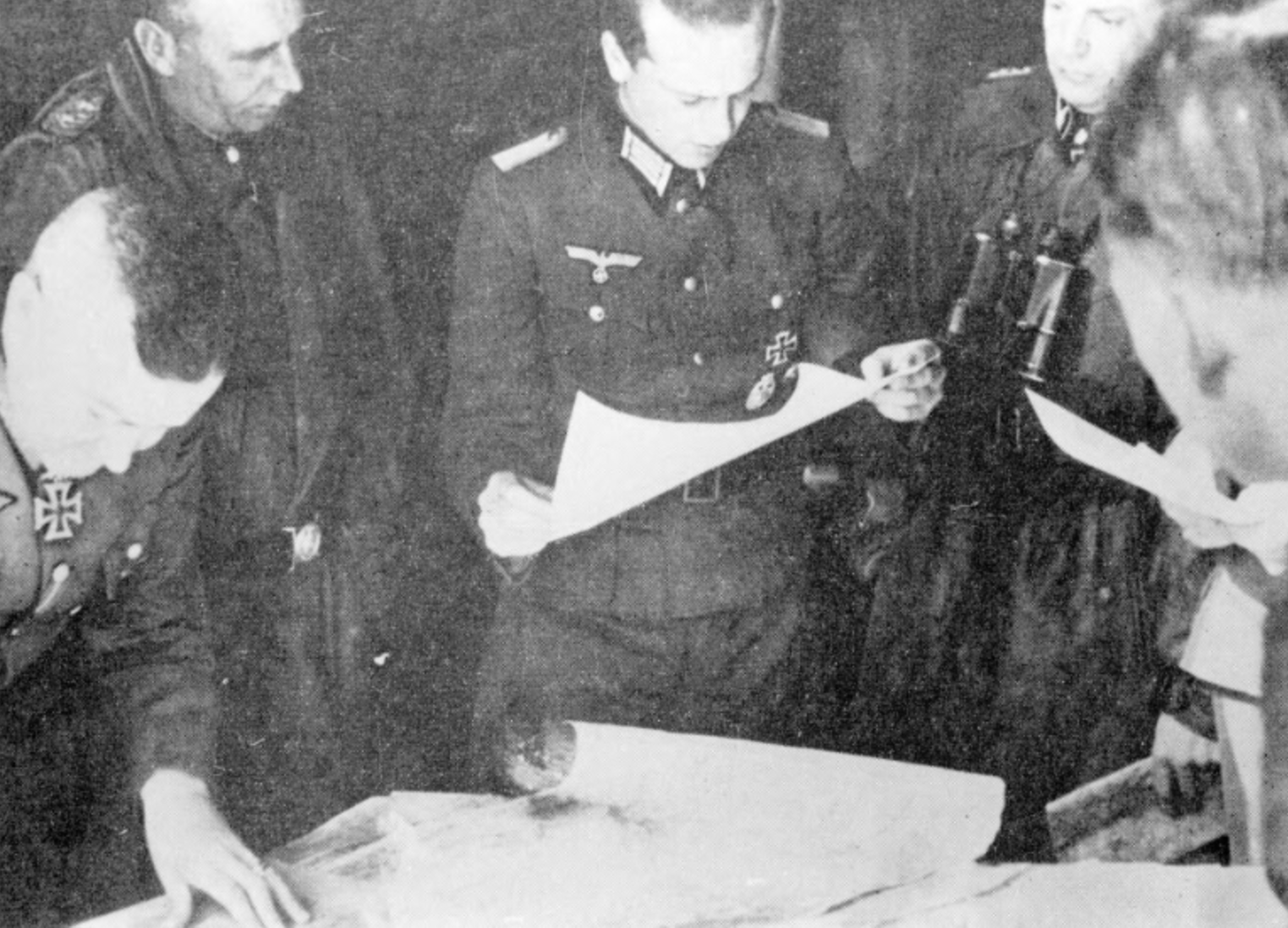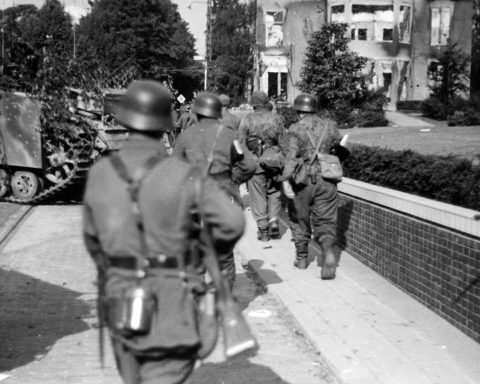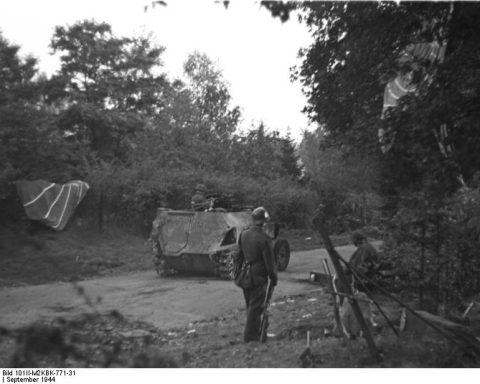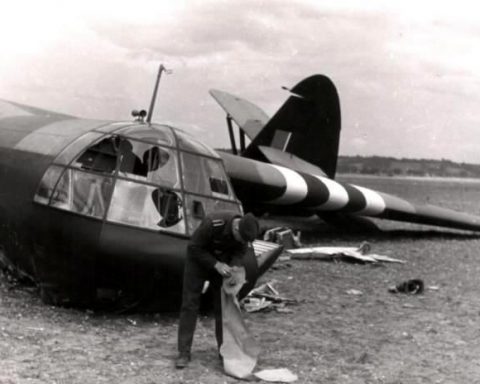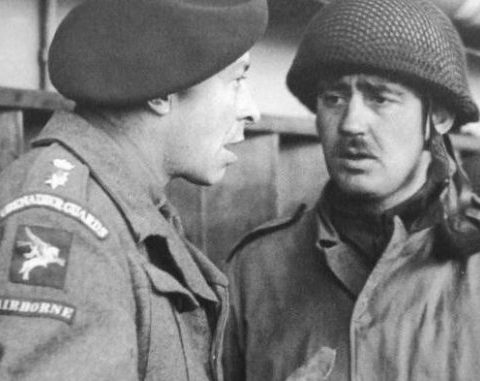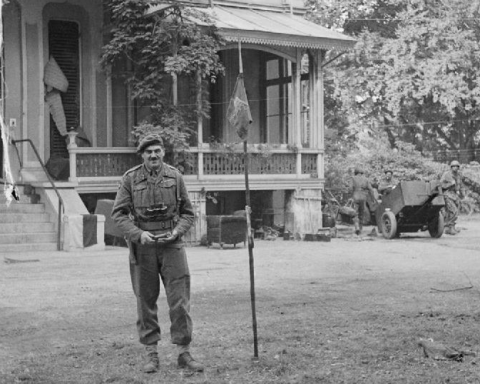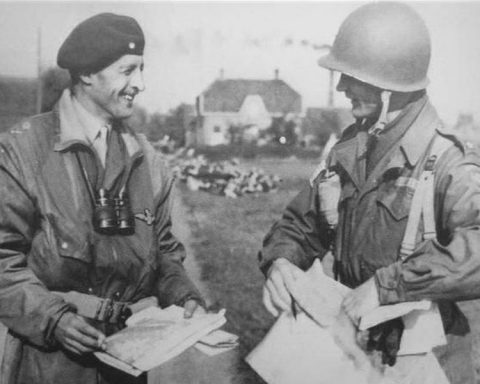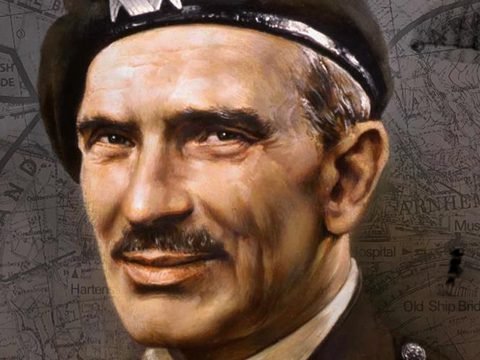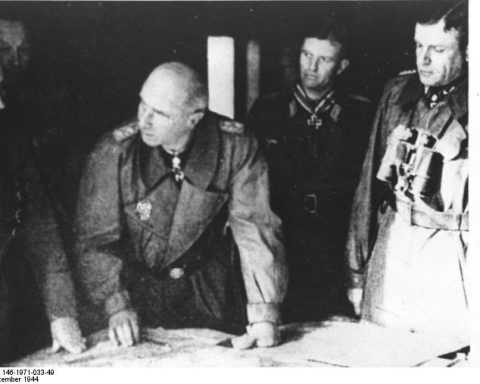When speaking of the German commanders responsible for the Allied defeat at Arnhem, it often refers to Field Marshal Walter Model and General Wilhelm Bittrich. Less attention is paid to Obersturmbannführer Walter Harzer. Yet it was Harzer’s troops that ultimately defeated the British Airborne Division.
Harzer led the 9th SS Armored Division Hohenstaufen as Obersturmbannführer (colonel). At the start of Operation Market Gaden, Harzer was appointed by Field Marshal Walter Model to defeat the British at the Rhine Bridge in Arnhem and in Oosterbeek with his division, supplemented with reinforcements.
At the start of Market Garden, Walter Harzer had almost no experience as a commanding commander. He had been appointed commander of the 9th SS Panzer Division only recently. But from a German point of view, Harzer won a glorious victory during the fighting at the Battle of Arnhem. After the Battle of Arnhem he was rewarded with the Knight’s Cross by the German army command.
France
Only 32 years old, Walter Harzer was a young commander. Harzer had been a staff officer for most of the war, but in August 1944 he was put in charge of the 9th SS Armored Division.
The 9th SS Panzer Division was in France at the time and was in a chaotic retreat after British and American troops surrounded and destroyed many German troops at Falaise. The 9th SS Armored Division was also badly hit. Almost all of the division’s tanks were destroyed by the Allies. After the division commander died, Harzer was appointed commander.
The first task Harzer was given was to withdraw his battered division to the north to escape Allied encirclement. Harzer himself, with part of his headquarters, was trapped behind the American lines. He managed to slip through the American front line by means of a trick.
In the dark, Harzer’s column managed to gain free passage by placing a few German soldiers on the road. With red light signals, the Germans stopped advancing American columns, while the German column was thus given free passage.
Airborne landings
The battered 9th and 10th SS Panzer Division were then withdrawn north of Arnhem on the Veluwe to rest and be equipped again. At the start of Operation Market Garden, parts of the divisions were located in Dieren, Zutphen, Apeldoorn and Brummen. All within 20 miles of Arnhem.
The strongest part of the 9th SS Armored Division, the SS Panzer Auklärungs Abteilung 9, was located on Sunday September 17 at Hoenderloo. Walter Harzer was with these troops when the airborne landings began. Harzer was there to present the Knight’s Cross to the unit commander Hauptsturmführer Viktor Gräbner.
Harzer: “When the Knight’s Cross was awarded, the first landings of paratroopers and gliders were observed. It could not yet be concluded that this was a major action. We therefore enjoyed our lunch in peace.”
That changed a few moments later when the German headquarters raised the alarm. Harzer immediately ordered Gräbner to advance to Arnhem and Wolfheze with his unit of 500 men and 40 armored vehicles. Harzer himself drove back to his headquarters in Beekbergen to send all units of the division to the landing sites.
Many experienced German units had already taken the initiative to take action themselves and were already underway at that time.
Meanwhile, Harzer had been ordered by General Bittrich, his immediate boss, to stop the British:
“The Harzer division group is gathering in the Velp area and is preparing in such a way that an attack can be made from Velp on the enemy that has landed west of Oosterbeek.”
Due to the rapid reaction of Harzer’s troops, the Germans already had a line of defense at the beginning of the evening on Sunday, September 17, 1944. The German defense line ran roughly from Amsterdamseweg north of Oosterbeek to Mariëndal in the east, and from there via Heijenoord and Lombok to the south.
Only the immediate vicinity of the Elisabeth Gasthuis hospital and the road on the banks of the Rhine were not yet defended by German troops at that time. It is here that the 2nd Battalion led by John Frost was able to slip towards the Rhine Bridge.
But due to the lightning-fast reaction of the parts of Harzer’s division, the British advance towards Arnhem had been halted just a few hours after the airborne landings.
Cease fire
In the days that followed, the 9th SS Armored Division dealt with the British at the Rhine Bridge, and the British main force was driven back to Oosterbeek. Thanks to the armor reinforcements and the extra artillery and mortars that Harzer had received, the German troops at Oosterbeek gradually managed to break the British resistance in Oosterbeek.
On Sunday, September 24, Harzer saw a British message intercepted by a German listening post. In the radio message, the British in Oosterbeek reported that the dressing stations were overcrowded with injured people and that medical supplies were exhausted.
Harzer gave the message to Dr. Egon Skalka, who headed the medical unit of the 9th SS Armored Division. “Here. This is for you.”
Skalka then drove a red cross flag on his car to Oosterbeek, where he and the British physician Colonel Warrack agreed to a cease fire to take away the wounded British. Harzer immediately authorized the ceasefire when Skalka returned. General Bittrich also gave his consent.
At 3 p.m. on Sunday, September 24, a two-hour ceasefire started. By ambulances, cars and other transport arranged by the Germans, 450 wounded, both British and German, were taken away.
Harzer and Bittrich were scolded that evening by Field Marshal Walter Model when Model was notified of the ceasefire: “What the hell were you thinking?”
The battle in Oosterbeek was at that time already in a final phase and in the night of February 25 to 26 the British withdrew over the Rhine. The Battle of Arnhem was over.
Jeep
Colonel Harzer was rewarded with the Knight’s Cross after the fighting, but a bigger trophy for Harzer was a captured Jeep left by the British.
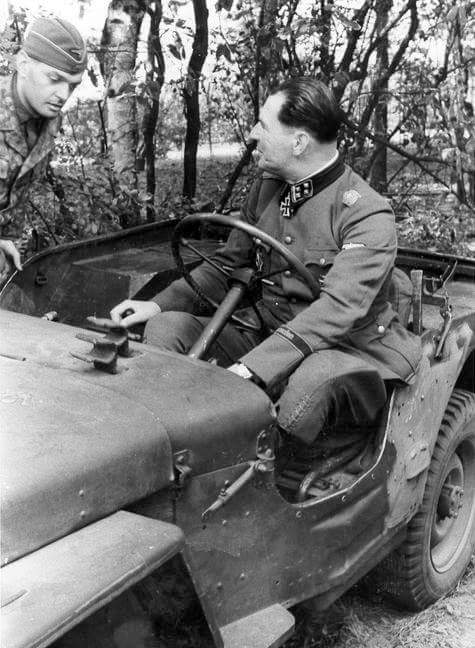
To his great regret, Harzer, a great car enthusiast, had to return the jeep to the German army command soon after the Battle of Arnhem.
“Shortly after the fighting, I was ordered by the high command to hand in the jeeps we captured. I refused and said almost all of our vehicles had been destroyed. Moreover, we had captured them. Then I got other vehicles in return. But the jeeps were better.”
After the Battle of Arnhem, Harzer was temporarily appointed chief of staff to the 5th SS Freiwilligen Gebirgskorps , but shortly thereafter he was given command of the 4th SS Polizei Panzergrenadier Division . Harzer surrendered to the Americans with the division on May 8, 1945.
After the war, Walter Harzer gave a detailed report on the German deployment during the Battle of Arnhem. For many years he corresponded with the Dutch amateur historian Theodoor Boeree. He also spoke extensively with Cornelis Ryan for the book ‘A Bridge too Far’.
From the British side, there has always been much appreciation for Harzer’s initiative to remove the injured in Oosterbeek. In 1980, Walter Harzer received a letter of thanks from British General Roy Urquhart.
“There are still many British ex-soldiers still alive because of your humane decision to transport British wounded to the Elisabeth Gasthuis in Arnhem during the rather unusual ceasefire on September 24, 1944. Thank you for that.
May I also say that I had and have great respect for the qualities of your old division!”
Walter Harzer died at the age of 69 on May 29, 1982.

